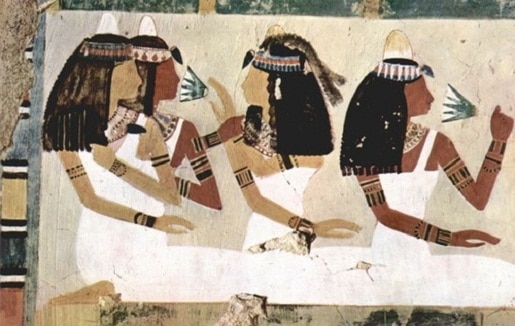The Egyptian climate with its hot summers and mild winters favored the use of light clothing made of vegetable fibers, mainly until Roman times with cotton, imported from India. Wool was used to a lesser extent.
History relates that small amounts of silk were traded with the eastern Mediterranean possibly from the second half of the second millennium BC as remains of silk have been found in Egyptian tombs.
Animal skins, especially leopard skins, were sometimes used by priests and pharaohs in their role as the first servants of the god.
Such vestments were found in the tomb of Tutankhamen and they were depicted quite frequently on the walls of tombs. Sometimes kings and queens wore decorative ceremonial clothing adorned with feathers.
The truth is that the most important textile was linen, whose variety varied, from fine woven linen, linen for royalty and for peasants of thick cloth.
The first stages of flax production were carried out by men: the plants were harvested and the plants were beaten to extract the fibers from them until they invented the stone and wood thread for which they were already worked by women. Until in the New Kingdom vertical looms were invented generally operated by men.
As the sewing of the clothes was very laborious, they began to make rectangular fabrics that were wrapped around the body and joined by a strap.
One detail is that many pieces of clothing were found in Tutankhamun's tomb: tunics, shirts, skirts, aprons and belts, socks, head dresses, caps, scarves, gloves and gloves, some of them with fine linen linings, and others with a separate index and middle finger and a hole for the thumb.
